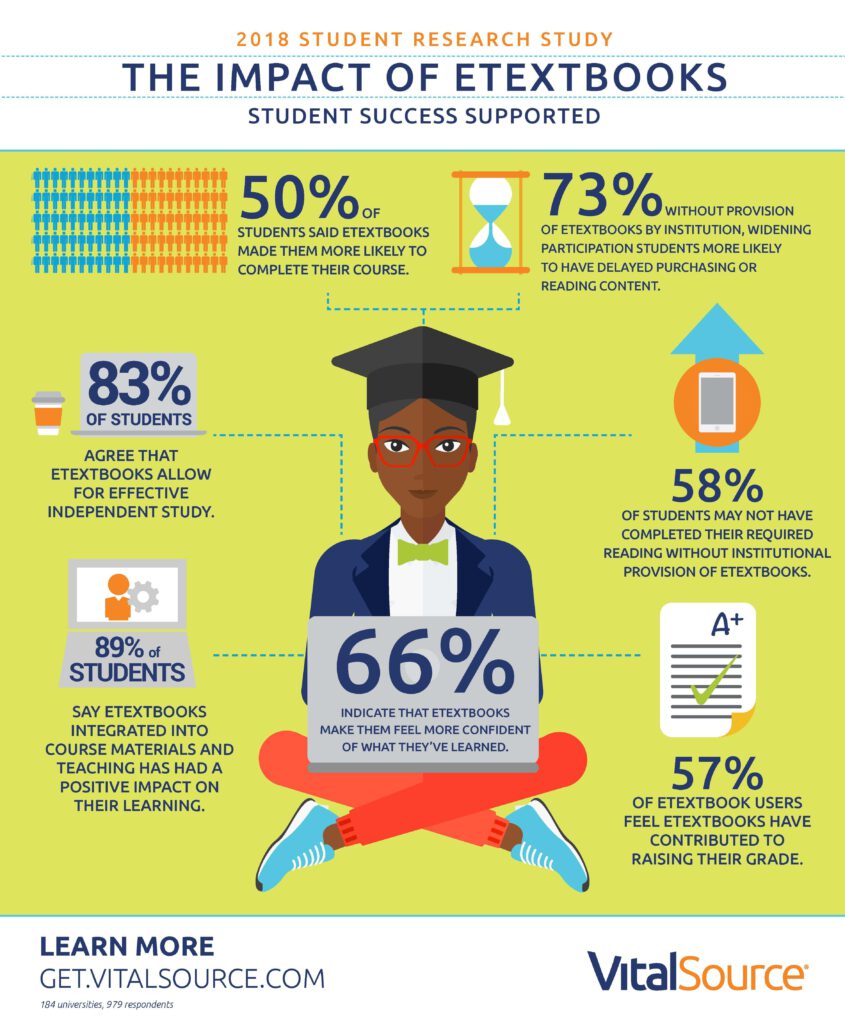Using eTextbooks to improve learning, access and student confidence

Student achievement and satisfaction are rising up the higher education regulatory agenda, forming a key focus for universities who are committed to meeting the requirements of the Teaching Excellence Framework (TEF).
From a student perspective, questions around value for money from higher education are now central to the decision-making process for candidates.
Progressive universities are realising that they need to invest in the right tools and approach to make sure that their learning outcomes are the best they can be and that they are seen by students to be delivering well-supported and cutting-edge education.
In a new survey conducted on behalf of VitalSource, it seems that eTextbooks are starting to have a major impact on how students are viewing and interacting with higher education.
The survey, which was recently conducted with 979 students across 184 UK universities, found that two thirds of students (66%) felt that eTextbooks provide them with a greater sense of confidence towards their learning, and over half (57%) believe they contribute to better grades.
In addition, 83% of students said that eTextbooks allow for more effective independent study and 50% of students said it made them more likely to complete their course.
These results suggest that by integrating eTextbooks widely into course materials, universities may be able to make, and prove, significant strides forward in meeting the teaching quality, learning environments and student outcome requirements of the TEF.
Phil Gee, Associate Head of School – Teaching and Learning, Plymouth University, said,
“It is our role as educators to offer a learning environment that is tailored to our students’ needs and enables all of them achieve their goals. eTextbooks allow us to give each and every student the same resources, to support their learning in a much more interactive way, and to develop a better understanding of how our students study.”
Access to course materials is a key issue for students, with 94% saying eTextbooks which are free or more affordable have a positive impact on their learning.
In particular, 73% of widening participation* respondents said they would have delayed purchasing or reading content required for their course if their university had not provided eTextbooks.
Furthermore, 58% of widening participation students stated that they did not believe they would have completed their required reading without them.
The vast majority (89%) of eTextbook users indicated that the functionality of these materials has had a positive impact on their learning, perhaps signalling a shift towards more modern, interactive ways of learning.
Most notably, students report that functions such as search (95%), the citation tool (89%) and note making tools (86%) helped with their studies. The results suggest that students are highly receptive to new ways of consuming information, seeking more than simply written materials.
John Donovan, Managing Director EMEA for VitalSource, commented,
“This research has been important in understanding what students value when it comes to their learning resources. It is clear that students are seeking flexibility, and no longer wish to simply rely on printed materials. If universities are able to incorporate interactive materials into their courses, then students stand to gain in terms of their learning and achievement in higher education.”
The study revealed that the use of modern learning tools like eTextbooks are becoming commonplace within many higher education institutions.
Two thirds of all students within the study reported that their university had provided them with an eTextbook.
This suggests that 80% of universities surveyed provide eTextbooks to at least some of their students.
One year prior, this figure was 66%, showing an uplift of 14% of universities now offering this service to students.
However, the research also revealed that universities need to do more than simply provide content, as students are more engaged when eTextbooks are well integrated into their course.
Nearly all students reported that links to eTextbooks in the course module (94%) and lecturers adding notes and tips (90%) had a positive impact on their learning.
This suggests that institutions should offer support and guidance to lecturers to integrate these resources into their modules, if their students are to reap the full benefits of online course materials.












Responses